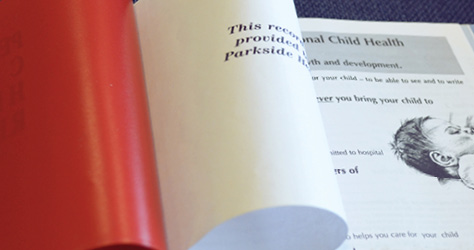Your baby’s Red Book tracks their growth, vaccinations and development.
We show you what’s inside and how to get the most out of it.
At a glance
- Your baby didn't come with a manual, the 'Red Book' is as close as it gets
- Centiles are a way of measuring your baby's development against 'the norm'

Your baby didn’t come with an instruction manual (sadly) so the ‘Red Book’ - officially called the Personal Child Health Record - is the closest you’ll get.
You should be given your red book by the maternity unit or the midwife on their first visit – and as you’ll need it until your tiny newborn is four years old, it’s worth finding a nice safe place to keep it, away from the dog/cat/curious toddler.
You’ll need to dig it out to bring to every appointment with your GP, clinic or health visitor and also if you ever need to go to A&E with your baby. It will end up dog-eared and well-thumbed, so enjoy its shiny new red cover while it lasts!
What’s inside - The Red Book has four sections:
Baby details and local information
This part lists all the obvious things – your baby’s name, NHS number and date of birth plus family contacts and details of your birth experience. There are also useful local contacts.
Immunisations
Here you’ll find a list of all the vaccinations your baby will be having and when – right the way through to four years old. Every time they have a jab the nurse will record it in the Red Book, which helps you keep track of what they’ve had and when so you can keep up to date.
Screening and routine reviews
They’ll be having hearing and sight checks plus regular routine health reviews, and all the results will be recorded here.
Growth charts
These look complicated but once you get the hang of it, you’ll probably find studying their progress slightly addictive. Every time your baby is weighed and measured they’ll get a little dot on their growth chart for height, weight and head circumference (there are different charts for boys and girls, and for premature babies). This will show you how they compare to the average baby of the same age.
What on earth are ‘centiles’?
The chart is divided into centiles, which are basically just a way of comparing your baby to others. So if your baby is on the 25th centile for weight and the 50th for height, it means that if you lined up 100 babies from lightest to heaviest, yours would be number 25 (24 would be lighter and 75 would be heavier). For height, your baby would be number 50 – bang on average – with 49 shorter and 50 taller. All children are different and it really doesn’t matter which centile your child is on: all the professionals are looking for is that they stay roughly around the same centile as they grow up.